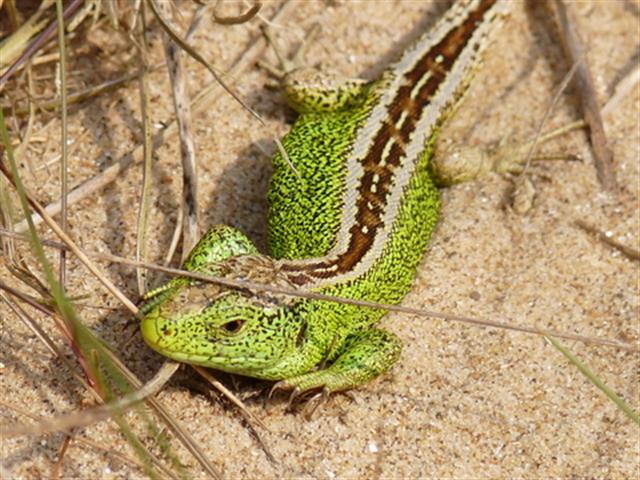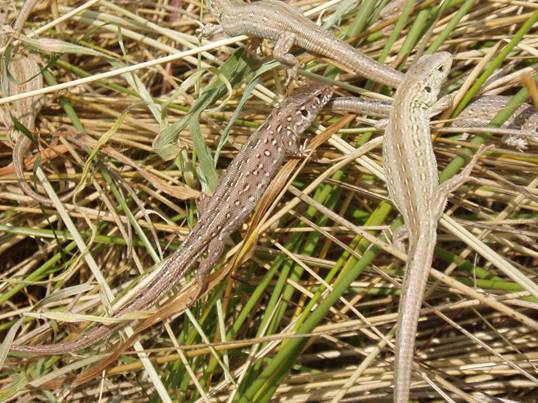Biodiversity
Related Links
Latest News
A Starring Role for Nantclwyd’s Lesser Horseshoe Bats
22.05.2015
Living Landscape Brought Back to Life
05.12.2014
More Information
See our project pages for more information about sand lizard conservation in Denbighshire.
Facebook Page
Sand lizard
This beautiful lizard is one of Denbighshire’s rarest species and lives on the coastal sand dunes in the north of the county.
 Description and identification: The sand lizard is larger and bulkier than the related common lizard, which can be found alongside it. Male sand lizards are very striking, having bright green flanks. Females and juveniles are brown, and all forms have distinctive dark spots with pale centres called ‘oceli’.
Description and identification: The sand lizard is larger and bulkier than the related common lizard, which can be found alongside it. Male sand lizards are very striking, having bright green flanks. Females and juveniles are brown, and all forms have distinctive dark spots with pale centres called ‘oceli’.
Habitat: The vast majority of sand lizards in Britain (over 95%) inhabit lowland heathland. The remainder – including the populations in North Wales – live on coastal sand dunes. They prefer the more dynamic dunes, with warm sheltered areas and south-facing slopes and a mosaic of bare sand and dense marram grass.
Diet: Sand lizards hunt invertebrates like spiders, grasshoppers, crickets and other insects.

Ecology and reproduction: Like all reptiles, sand lizards are ‘ectothermic’ meaning they rely on their environment to regulate their body temperature. Sand lizards need to bask on bare sand to warm up their bodies before becoming active, and activity is weather dependent. Males emerge from hibernation in early March, with females emerging a few weeks later. Sand lizards aren’t territorial but males do compete with each other for females. From late May to June, the female digs a nest in bare sand and lays six to 14 eggs. The juveniles start hatching at the end of August and remain active until October or November, before hibernating. The adults begin hibernation earlier, retreating into their burrows from August or September.
Distribution: Sand lizards have always had a limited distribution in England and Wales, but this has been reduced further by human activity. The species became extinct in Wales, but has been reintroduced to two sites on the North Wales coast: Talacre Dunes in Flintshire and Gronant Dunes in Denbighshire. Their worldwide distribution includes parts of Europe, Russia and central Asia.
Threats: The main threats facing this species are the loss, degradation and fragmentation of its habitat. In North Wales, development along the coast, such as holiday parks and golf courses, has destroyed much of the sand dune habitat. Only a small fraction of an extensive tract of dunes along the coast still remains.
Status: The sand lizard is protected under UK and European law and is a priority for conservation at a UK, Wales and Denbighshire level.



